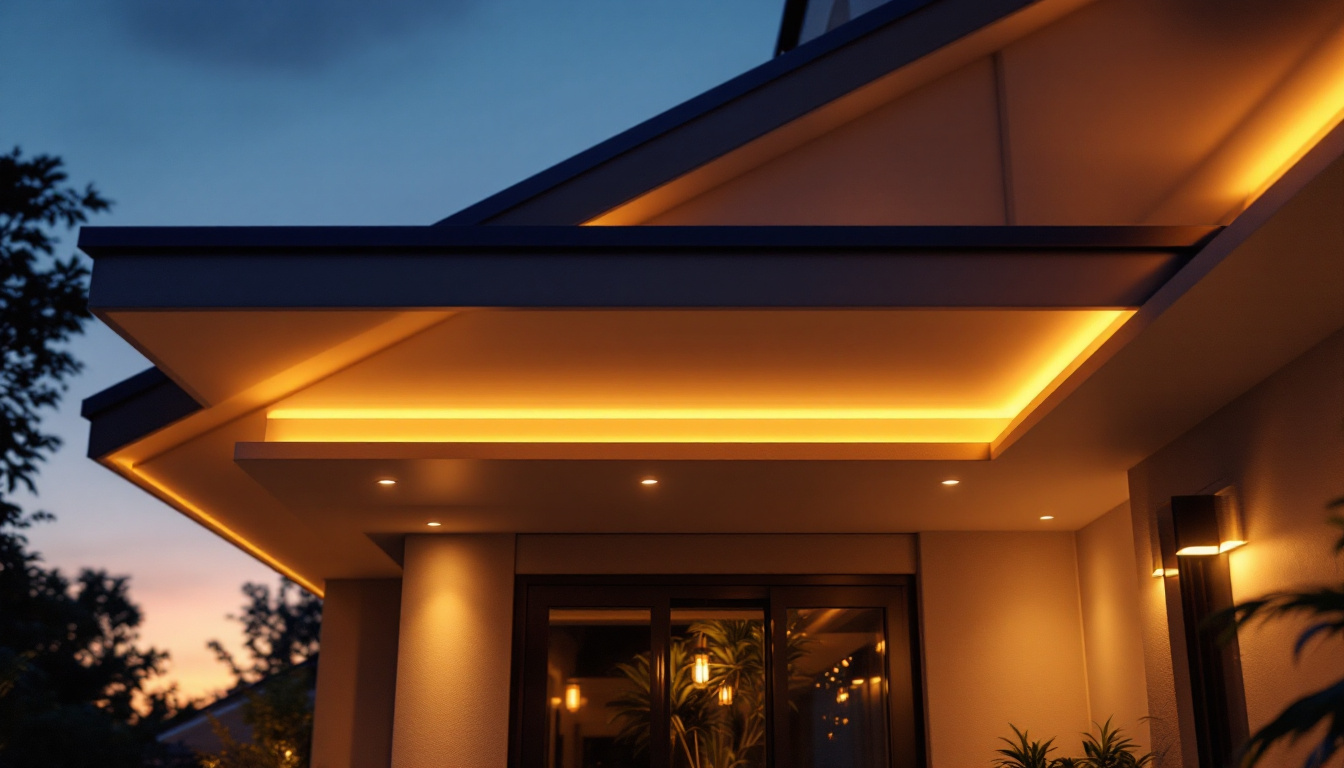
Lighting contractors play a crucial role in ensuring that spaces are well-lit, functional, and aesthetically pleasing. As the industry evolves, the demand for energy-efficient lighting solutions has surged, leading to the increased popularity of LED HID replacements. This transition not only helps in reducing energy consumption but also enhances the quality of light in various environments. However, to effectively carry out LED HID replacements, contractors must be equipped with the right tools. This article outlines the essential tools that lighting contractors need to successfully navigate LED HID replacement projects.
LED HID (High-Intensity Discharge) replacements are designed to provide the same level of brightness as traditional HID lamps while consuming significantly less energy. These replacements are available in various wattages and color temperatures, making them versatile for different applications, from street lighting to industrial settings. The adaptability of LED HID replacements also allows for tailored lighting solutions that can enhance both aesthetic appeal and functionality in diverse environments, whether illuminating a parking lot or spotlighting artwork in a gallery.
The benefits of switching to LED HID replacements extend beyond energy savings. They offer longer lifespans, reduced maintenance costs, and improved light quality. For lighting contractors, understanding the nuances of these products is essential for providing clients with the best solutions tailored to their needs. Moreover, the ease of installation and compatibility with existing fixtures can streamline the transition process, allowing for a quicker upgrade without extensive renovations.
One of the primary benefits of LED HID replacements is their energy efficiency. Traditional HID lamps can consume a substantial amount of electricity, whereas LED alternatives use significantly less power to produce the same amount of light. This efficiency translates to lower utility bills for clients and a reduced carbon footprint. Additionally, many LED fixtures come with smart technology options, enabling users to control brightness and schedules, further optimizing energy use and enhancing convenience.
Additionally, LED lights have a longer lifespan, often lasting up to 25,000 hours or more compared to the 10,000 hours typical of HID lamps. This longevity means fewer replacements and less waste, making it an environmentally friendly option. Furthermore, the quality of light provided by LEDs is often superior, with better color rendering and less flicker, which enhances visibility and comfort in various settings. This improved light quality can significantly affect productivity in workplaces, as well as safety in outdoor areas, where proper illumination is crucial for preventing accidents and ensuring security. The ability to customize color temperatures also allows for creating the desired ambiance, whether it’s a warm, inviting glow for a restaurant or a bright, focused light for a warehouse.
Equipping oneself with the right tools is vital for any lighting contractor looking to perform LED HID replacements efficiently and safely. The following sections detail the essential tools that should be part of every contractor’s toolkit.
Every lighting contractor needs a set of basic hand tools to perform installations and replacements. These tools include screwdrivers, pliers, wire cutters, and wrenches. A good quality screwdriver set with both flat-head and Phillips options is essential for loosening and tightening fixtures. Pliers and wire cutters are necessary for handling electrical connections safely and efficiently.
In addition to these basic tools, having a reliable utility knife can help with stripping wires and making precise cuts in various materials. A tape measure is also crucial for ensuring proper placement and alignment of fixtures during installation. These basic hand tools form the foundation of any lighting contractor’s toolkit and are indispensable for LED HID replacement tasks.
When working with electrical systems, safety is paramount. Electrical testing equipment is essential for ensuring that all connections are secure and that the power supply is functioning correctly. A multimeter is a versatile tool that can measure voltage, current, and resistance, allowing contractors to troubleshoot any issues that may arise during installation.
In addition to a multimeter, having a non-contact voltage tester is highly recommended. This tool allows contractors to quickly check for live wires without making direct contact, reducing the risk of electrical shock. Using these testing devices not only ensures safety but also helps in diagnosing potential problems before they escalate.
In addition to basic hand tools and electrical testing equipment, specialized tools can significantly enhance the efficiency and effectiveness of LED HID replacements. These tools are designed to address specific challenges that may arise during the replacement process.
Removing existing HID fixtures can be a challenging task, especially when they are mounted in hard-to-reach places. Fixture removal tools, such as adjustable wrenches and socket sets, are essential for loosening and removing fixtures safely. Depending on the installation, a ladder may also be necessary to reach elevated fixtures.
For contractors working in industrial or commercial settings, having a power drill with various drill bits can expedite the removal process. This tool allows for quick and efficient disassembly of fixtures, saving valuable time on the job site. Additionally, a magnetic pickup tool can be useful for retrieving dropped screws or hardware in tight spaces.
Once the old fixtures are removed, installation tools come into play. A torque wrench is particularly important for ensuring that screws and bolts are tightened to the manufacturer’s specifications. Over-tightening can damage fixtures, while under-tightening can lead to loose connections and potential hazards.
Moreover, having a wire crimper and connectors on hand is essential for making secure electrical connections. These tools ensure that wires are properly joined, minimizing the risk of electrical failure. A heat shrink tubing kit can also be beneficial for protecting connections from moisture and wear, further enhancing the longevity of the installation.
Safety should always be a top priority for lighting contractors. Working with electrical systems and at heights can pose significant risks, making it essential to have the right safety equipment on hand. This section outlines the key safety gear that contractors should use while performing LED HID replacements.
Personal protective equipment (PPE) is crucial for safeguarding contractors from potential hazards. Hard hats, safety goggles, and gloves are essential for protecting against falling objects, electrical shock, and cuts. High-visibility vests are also recommended, especially when working in outdoor or low-light conditions, to ensure that contractors are easily seen by others on the job site.
Additionally, sturdy work boots with slip-resistant soles can help prevent accidents and injuries while navigating various surfaces. Investing in quality PPE not only enhances safety but also promotes a professional image on the job site.
For contractors working with heavy fixtures or in elevated locations, lifting equipment is essential. A sturdy ladder or scaffolding can provide the necessary height and stability for safe installation. When working with particularly heavy fixtures, a hoist or lift can make the job significantly easier and safer.
Using lifting equipment not only reduces the physical strain on contractors but also minimizes the risk of accidents associated with manual lifting. Ensuring that all lifting equipment is well-maintained and inspected regularly is vital for safety and efficiency on the job site.
Equipping oneself with the right tools is only part of the equation. Implementing best practices during the LED HID replacement process is equally important for achieving successful outcomes. This section discusses some of the best practices that lighting contractors should follow.
Before starting any LED HID replacement project, thorough planning and preparation are essential. This includes assessing the existing lighting system, determining the appropriate LED replacements, and creating a detailed installation plan. Contractors should also consider the specific needs of the client and any unique challenges that may arise during the installation process.
Gathering all necessary tools and equipment before arriving at the job site can save time and prevent delays. A well-organized approach ensures that contractors can work efficiently and effectively, minimizing disruptions for clients.
When replacing HID fixtures, proper disposal of the old units is crucial for environmental sustainability. Many HID lamps contain hazardous materials, such as mercury, which require special handling and disposal procedures. Contractors should familiarize themselves with local regulations regarding the disposal of these materials and ensure that they are disposed of safely and responsibly.
Encouraging clients to consider recycling options for old fixtures can also promote sustainability and demonstrate a commitment to environmentally friendly practices. Providing clients with information about recycling programs can enhance the contractor’s reputation and build trust with clients.
LED HID replacements are becoming increasingly popular due to their energy efficiency, longevity, and superior light quality. For lighting contractors, having the right tools and following best practices are essential for executing successful replacements. From basic hand tools to specialized equipment and safety gear, each tool plays a vital role in ensuring that projects are completed efficiently and safely.
By investing in quality tools and adhering to best practices, lighting contractors can enhance their service offerings and provide clients with the best possible solutions for their lighting needs. As the industry continues to evolve, staying informed about new technologies and techniques will further empower contractors to excel in their field.
Ready to elevate your lighting projects with the best tools in the trade? Look no further than LumenWholesale for all your LED HID replacement needs. Our extensive selection of spec-grade lighting products comes with unbeatable wholesale prices, ensuring you get the most value for your investment. Say goodbye to local distributor markups and hello to high-performance, reliable lighting that meets the highest industry standards. Plus, with free shipping on bulk orders, you can stock up on premium lighting essentials without worrying about hidden fees. Make your next project a shining success and experience the convenience of LumenWholesale. Visit us now for Wholesale Lighting at the Best Value.

Discover how 4 feet LED lights can revolutionize your lighting solutions with energy efficiency, versatility, and superior illumination.

Discover innovative strategies to enhance profitability in the lighting industry with “Hi Wall: Boosting Profits, A Guide for Lighting Contractors.” This comprehensive guide offers practical tips, insider insights, and effective techniques to elevate your business and maximize returns.

Discover how incorporating roof overhang recessed lights can enhance your lighting installation projects.

Discover why industrial lighting fixtures are crucial for lighting contractors in enhancing efficiency, safety, and aesthetics.